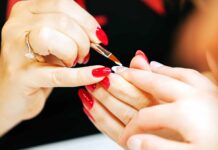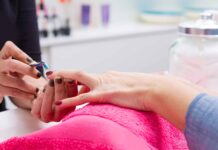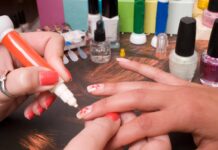In today’s beauty-conscious world, nail salons are a popular destination for those looking to pamper themselves and spruce up their nails. However, with the rise in hygiene concerns, it’s essential for nail salons to prioritize cleanliness and sanitation to ensure the safety of their clients. This raises the question – How do nail salons sanitize their tools?
The hygiene practices of nail salons are crucial in preventing the spread of infections and diseases. Proper sanitation of tools not only protects clients but also creates a safe and welcoming environment for everyone. In this blog post, we will delve into the world of nail salon sanitation and explore the steps salons take to ensure their tools are clean and safe for use.
1. Cleaning vs. Sanitizing: Before diving into the specifics of how nail salons sanitize their tools, it’s important to understand the difference between cleaning and sanitizing. Cleaning involves removing dirt, debris, and residues from tools, while sanitizing is the process of killing germs and bacteria to prevent the spread of infections. Both steps are crucial in maintaining the hygiene of salon tools.
2. Disinfection Techniques: Nail salons use various techniques to sanitize their tools, such as sterilization, autoclaving, and chemical disinfection. Sterilization involves using high heat or pressure to kill all microorganisms on the tools, while autoclaving uses steam under pressure to achieve the same result. Chemical disinfection involves using specialized disinfectants to kill bacteria and viruses on the tools.
3. Single-Use vs. Reusable Tools: Some nail salons opt for single-use disposable tools to minimize the risk of infection, while others use reusable tools that are properly cleaned and sanitized between clients. Single-use tools include items like nail files, buffer blocks, and orangewood sticks, while reusable tools include metal clippers, nippers, and cuticle pushers. It’s essential for nail salons to have proper protocols in place for cleaning and disinfecting reusable tools to ensure they are safe for use.
4. Best Practices: To maintain a high standard of hygiene, nail salons should follow best practices for sanitizing their tools. This includes using EPA-approved disinfectants, following manufacturer’s instructions for cleaning and sterilizing tools, and implementing regular training for staff on proper sanitation procedures. Additionally, nail salons should have designated areas for cleaning and sanitizing tools to prevent cross-contamination.
In conclusion, the sanitation of tools in nail salons is a critical aspect of maintaining a safe and hygienic environment for clients. By following proper cleaning and sanitizing practices, nail salons can ensure that their tools are free from harmful bacteria and viruses. Clients can also play a role in maintaining hygiene by choosing reputable salons that prioritize cleanliness and sanitation. So next time you visit a nail salon, take note of their hygiene practices and feel confident that your nails are in safe hands.












